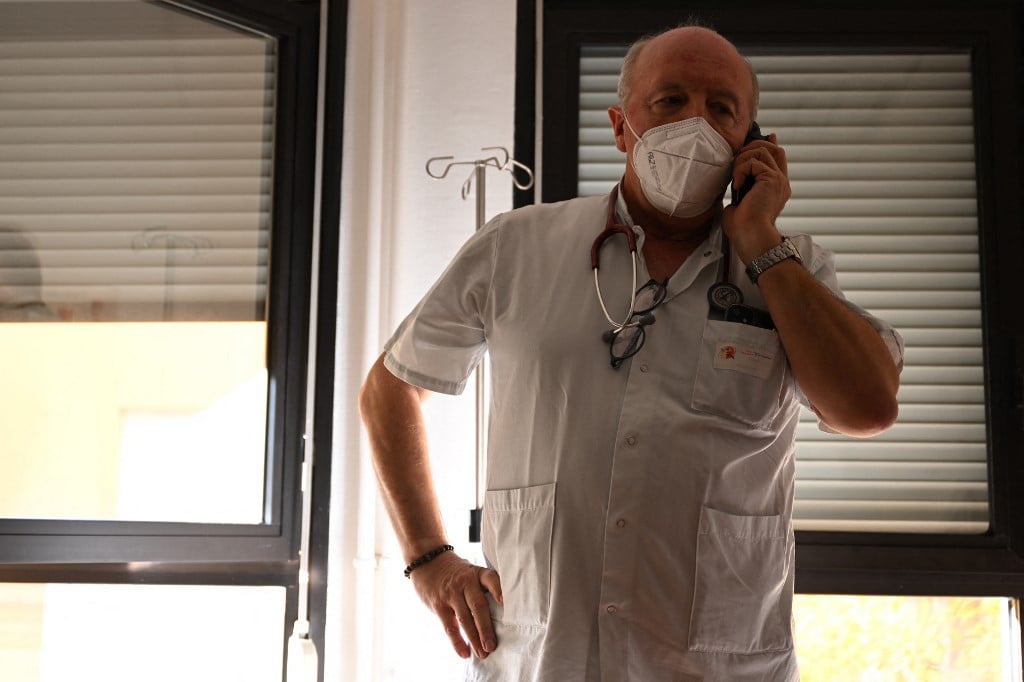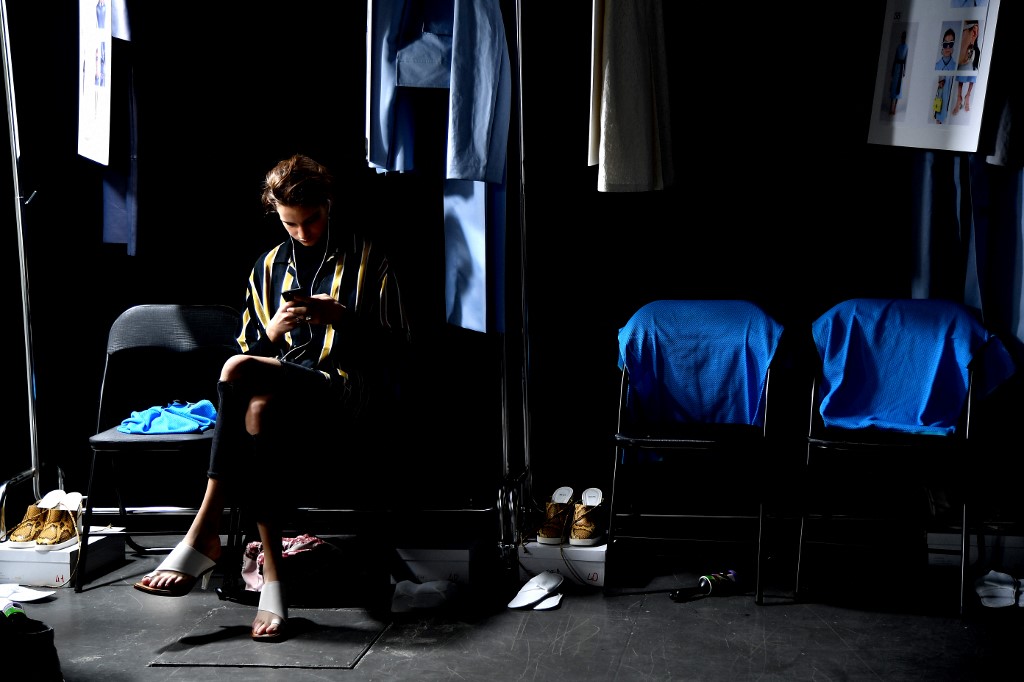How to answer the phone in Italian

Answering phone calls in Italy can be an intimidating task for learners, but you’ll soon become familiar with the most common greetings and phrases.
If you’ve recently moved to Italy and have only just started learning Italian, you may find answering the phone a fairly daunting task, whether that’s because understanding people over the phone is generally harder than in face-to-face situations or simply because you’re fearful of making a gaffe.
Unfortunately though, answering or making phone calls is something that can’t really be avoided in Italy as lots of services – from seeing a GP to booking an appointment at the local town hall – are in many instances not available online.
The good news here is that by no means do you need to be a master of phone conversations to have a successful chiamata.
In fact, simply becoming familiar with the most popular phone call formulas and general social etiquette will in most cases be more than enough to get the job done and avoid any mid-call meltdowns.
How to answer
There are several different ways you can answer the phone in Italy, with greetings and acceptable expressions varying depending on the situation and, more importantly, who you’re speaking with.
In general terms, when receiving a phone call from someone that you either don’t know or is not a friend or family member, it’s always best to answer with pronto, which literally means “ready”, as in “ready to speak”.
After saying pronto, your speaker will generally introduce themselves and explain why they’re calling. At times however (especially in the case of calls related to official matters), they may want to confirm your identity by asking: Parlo con …? (“Am I speaking with …?”).
Replying with Si, sono io. Mi dica. (“Yes, that’s me. Tell me.”) will suffice here.

A doctor is pictured inside his office as he talks on the phone. Photo by Nicolas TUCAT / AFP
Sometimes, you may also be asked Posso disturbarla? (literally, “May I trouble you?”), which you can reply to with Si, certo (“Yes, sure”) or, if you’re busy and would like to take the call later, with Mi potrebbe richiamare tra X minuti? (“Could you call me back in X minutes?”).
It’s worth noting that in this case you should always try to use the third-person polite form (known as Lei di cortesia; similar to the Spanish usted) when addressing the other speaker, unless you’re specifically told Dammi del tu (“Feel free to address me as ‘you’”).
READ ALSO: How to write a formal email in Italian
Of course, this is not necessary when answering phone calls from friends or family members.
Here, things are far easier as you can use a simple ciao (hello) or ciao, dimmi (hello, tell me) to answer the call, though pronto would still be acceptable.
When speaking with people you know, you may also occasionally ask them if it’s ok to put them on speaker (Posso metterti in vivavoce?) as you stir your rigatoni or if they can put someone else on with Puoi passarmi … per favore? (literally, “Can you pass me … please?”).
How to end a call
For informal calls, you might say La ringrazio per la telefonata (“Thank you for the phone call”), followed by buona giornata (“Have a nice day”) or buona serata (“Have a good evening”) – though there’s no national consensus on when exactly it’s ok to switch from the former to the latter.
READ ALSO: When do Italians switch from buongiorno to buonasera?
If you’re planning on speaking with someone again, you may also use a risentirci (roughly, “Until we hear from each other again”). This is the phone call version of arrivederci ("Until we see each other again"), which you may want to keep for face-to-face scenarios alone (also to avoid hurting the feelings of Italian grammar sticklers).

A young woman checks her mobile phone during Milan's Spring Summer 2020 fashion show. Photo by Tiziana FABI / AFP
In calls with friends and family, you can just wrap things up with ciao, followed by ci sentiamo (“Talk to you later”) or a presto (“Talk soon”).
What if I’m calling?
Many of the expressions and greetings generally used when answering a phone call apply when you’re the one making the call.
For formal calls, it’s advisable to start the conversation with buongiorno or buonasera depending on the time of the day, and then introduce yourself and the reason why you’re calling with: Mi chiamo … e chiamo per … (“My name’s … and I’m calling to …”).
If you’re speaking with an operator and wish to be redirected to the correct person, you may say something like Potrei parlare con …? (“May I speak with …?”).
None of the above is needed in informal calls.
Essential vocabulary
Telefono - Phone
Numero di telefono - Phone number
Cifre - Digits
Premere - To press
In attesa - On hold
Vivavoce - Speaker
Asterisco - Asterisk
Cancelletto - Hash key
Volume - Volume
Rumore - Noise
Cuffie - Headphones
Microfono - Microphone
Comments
See Also
If you’ve recently moved to Italy and have only just started learning Italian, you may find answering the phone a fairly daunting task, whether that’s because understanding people over the phone is generally harder than in face-to-face situations or simply because you’re fearful of making a gaffe.
Unfortunately though, answering or making phone calls is something that can’t really be avoided in Italy as lots of services – from seeing a GP to booking an appointment at the local town hall – are in many instances not available online.
The good news here is that by no means do you need to be a master of phone conversations to have a successful chiamata.
In fact, simply becoming familiar with the most popular phone call formulas and general social etiquette will in most cases be more than enough to get the job done and avoid any mid-call meltdowns.
How to answer
There are several different ways you can answer the phone in Italy, with greetings and acceptable expressions varying depending on the situation and, more importantly, who you’re speaking with.
In general terms, when receiving a phone call from someone that you either don’t know or is not a friend or family member, it’s always best to answer with pronto, which literally means “ready”, as in “ready to speak”.
After saying pronto, your speaker will generally introduce themselves and explain why they’re calling. At times however (especially in the case of calls related to official matters), they may want to confirm your identity by asking: Parlo con …? (“Am I speaking with …?”).
Replying with Si, sono io. Mi dica. (“Yes, that’s me. Tell me.”) will suffice here.

Sometimes, you may also be asked Posso disturbarla? (literally, “May I trouble you?”), which you can reply to with Si, certo (“Yes, sure”) or, if you’re busy and would like to take the call later, with Mi potrebbe richiamare tra X minuti? (“Could you call me back in X minutes?”).
It’s worth noting that in this case you should always try to use the third-person polite form (known as Lei di cortesia; similar to the Spanish usted) when addressing the other speaker, unless you’re specifically told Dammi del tu (“Feel free to address me as ‘you’”).
READ ALSO: How to write a formal email in Italian
Of course, this is not necessary when answering phone calls from friends or family members.
Here, things are far easier as you can use a simple ciao (hello) or ciao, dimmi (hello, tell me) to answer the call, though pronto would still be acceptable.
When speaking with people you know, you may also occasionally ask them if it’s ok to put them on speaker (Posso metterti in vivavoce?) as you stir your rigatoni or if they can put someone else on with Puoi passarmi … per favore? (literally, “Can you pass me … please?”).
How to end a call
For informal calls, you might say La ringrazio per la telefonata (“Thank you for the phone call”), followed by buona giornata (“Have a nice day”) or buona serata (“Have a good evening”) – though there’s no national consensus on when exactly it’s ok to switch from the former to the latter.
READ ALSO: When do Italians switch from buongiorno to buonasera?
If you’re planning on speaking with someone again, you may also use a risentirci (roughly, “Until we hear from each other again”). This is the phone call version of arrivederci ("Until we see each other again"), which you may want to keep for face-to-face scenarios alone (also to avoid hurting the feelings of Italian grammar sticklers).

In calls with friends and family, you can just wrap things up with ciao, followed by ci sentiamo (“Talk to you later”) or a presto (“Talk soon”).
What if I’m calling?
Many of the expressions and greetings generally used when answering a phone call apply when you’re the one making the call.
For formal calls, it’s advisable to start the conversation with buongiorno or buonasera depending on the time of the day, and then introduce yourself and the reason why you’re calling with: Mi chiamo … e chiamo per … (“My name’s … and I’m calling to …”).
If you’re speaking with an operator and wish to be redirected to the correct person, you may say something like Potrei parlare con …? (“May I speak with …?”).
None of the above is needed in informal calls.
Essential vocabulary
Telefono - Phone
Numero di telefono - Phone number
Cifre - Digits
Premere - To press
In attesa - On hold
Vivavoce - Speaker
Asterisco - Asterisk
Cancelletto - Hash key
Volume - Volume
Rumore - Noise
Cuffie - Headphones
Microfono - Microphone
Join the conversation in our comments section below. Share your own views and experience and if you have a question or suggestion for our journalists then email us at [email protected].
Please keep comments civil, constructive and on topic – and make sure to read our terms of use before getting involved.
Please log in here to leave a comment.